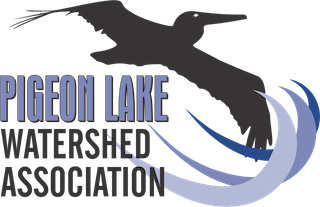What in-lake approaches are being considered to address water quality?
Investigation of In-Lake Management feasibility is one of the recommendations of the Pigeon Lake Watershed Management Plan. Various in-lake management options have been, and will continue to be, assessed for feasibility at Pigeon Lake. A wide variety of options have been considered - including aeration, mixing devices, algal harvesting, water importation, algicides, and the addition of substances that would result in phosphorus sequestration. But to date, no feasible solution has been found.
Feasibility Assessment
In-lake interventions require regulatory approvals and need to be thoroughly assessed for feasibility and applicability given the context of Pigeon Lake. There are many key factors that must be considered, including:
Demonstrated effectiveness - Will the treatment work for a large, shallow, prairie lake?
Duration of effect - What is the timeframe of effectiveness before natural forces overcome the intervention and a reapplication is necessary?
Assurance of success - Are there sufficient examples of success, and sufficient scientific consensus on similar lakes that point towards the intervention delivering the desired effect?
Assurance of benign effect - Is there sufficient scientific evidence that the intervention will not negatively impact human health and important organisms living in and around the lake?
Feasible cost-benefit - What is the cost of the intervention? Is the cost one-time, periodic, or annual? Do the project benefits justify the expenditures?
Targeted Regulatory Barriers - Are there specific environmental regulations from any order of government that restrict or exclude the type of intervention?
If the assessments are positive, then a candidate for a water quality project would also have a set of questions going through the implementation stages including, project governance, regulatory approval, project implementation and ongoing environmental monitoring and re-interventions. These questions include:
Who is responsible for project governance?
Which organization is equipped, capable, and willing to take the lead to make a regulatory application, undertake the studies, manage the project, acquire the funds, be accountable to funders, and be responsible to regulatory authorities for delivering on conditions of an authorization and addressing potential environmental liabilities?
Who is responsible for associated costs?
If some or all the costs are to be borne by local rate payers, what is the mechanism to equitably share project costs and provide accountability?
What will the project look like?
How would a proposed water quality project be implemented? What are the logistics?
Can it accomplished in one season, multiple seasons or will it be ongoing in perpetuity?
Who will provide the technical leadership?
Is everyone on board and on the same page?
Will there a consensus among all twelve surrounding municipalities and the Four Maskwacis Cree Nations to proceed with the candidate project?
Will would both provincial and federal governments be in agreement?
Current Status
The search for feasible in-lake management options is one that is complicated and ongoing. To date, no option has emerged that is feasible in all aspects.
The PLWA remains supportive of the investigation of in-lake options. Any potentially feasible in-lake solution would likely take considerable time to move from concept to approval to implementation. Opinions of feasibility need to be demonstrably effective, affordable, and benign, for a large lake such as Pigeon Lake. On behalf of our members and partners, the PLWA will remain engaged related to in-lake management feasibility.
In the meantime, all of the other Watershed Management Plan recommendations are being actively pursued by the PLWA, the municipalities and our partners. These actions are all directed at the same end objectives: a clean and healthy lake and watershed for future generations.
